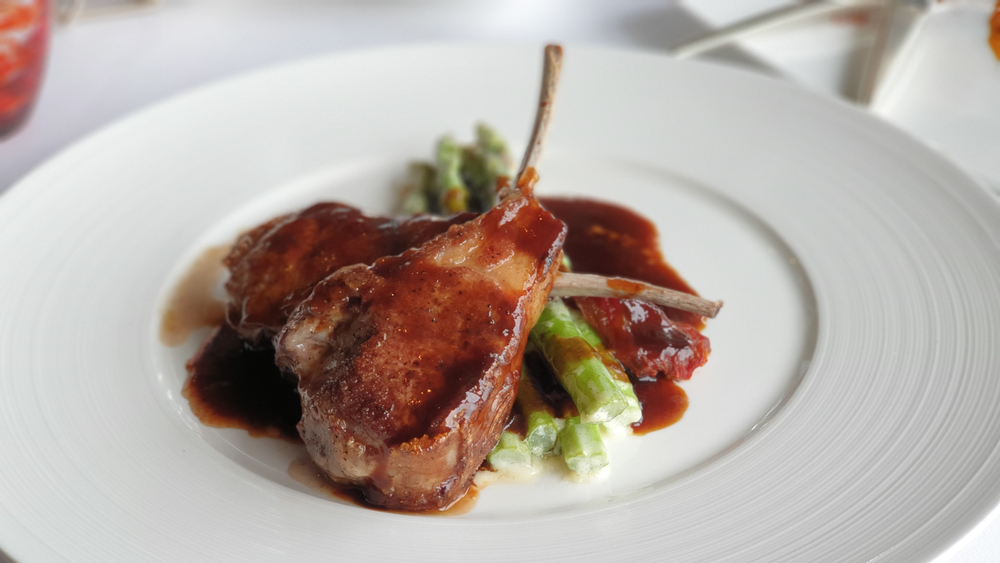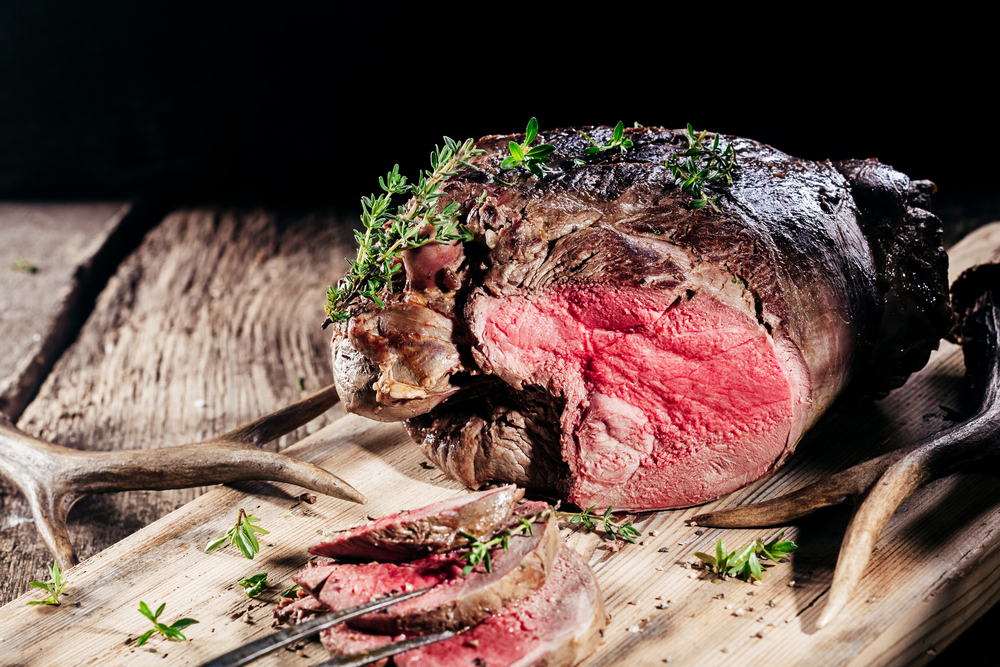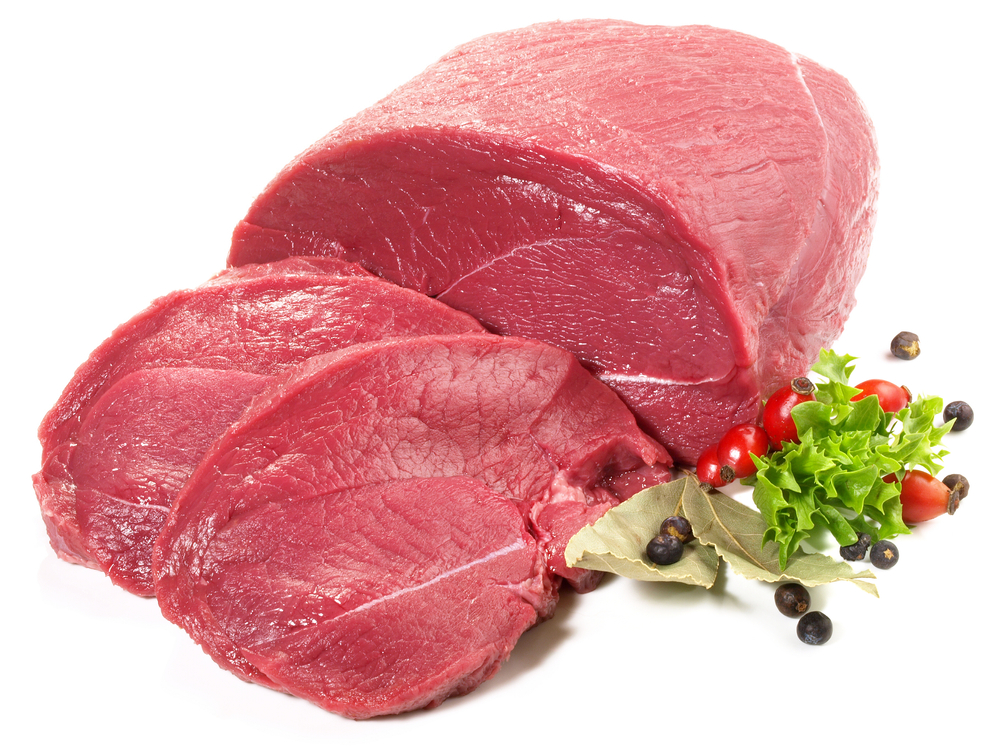I’ve always been curious about what lamb tastes like. It’s not a meat that I grew up eating, and I’ve heard mixed reviews from others who have tried it.
Some describe it as gamey, while others say it’s tender and flavorful. So, I decided to do some research and find out for myself what lamb really tastes like.
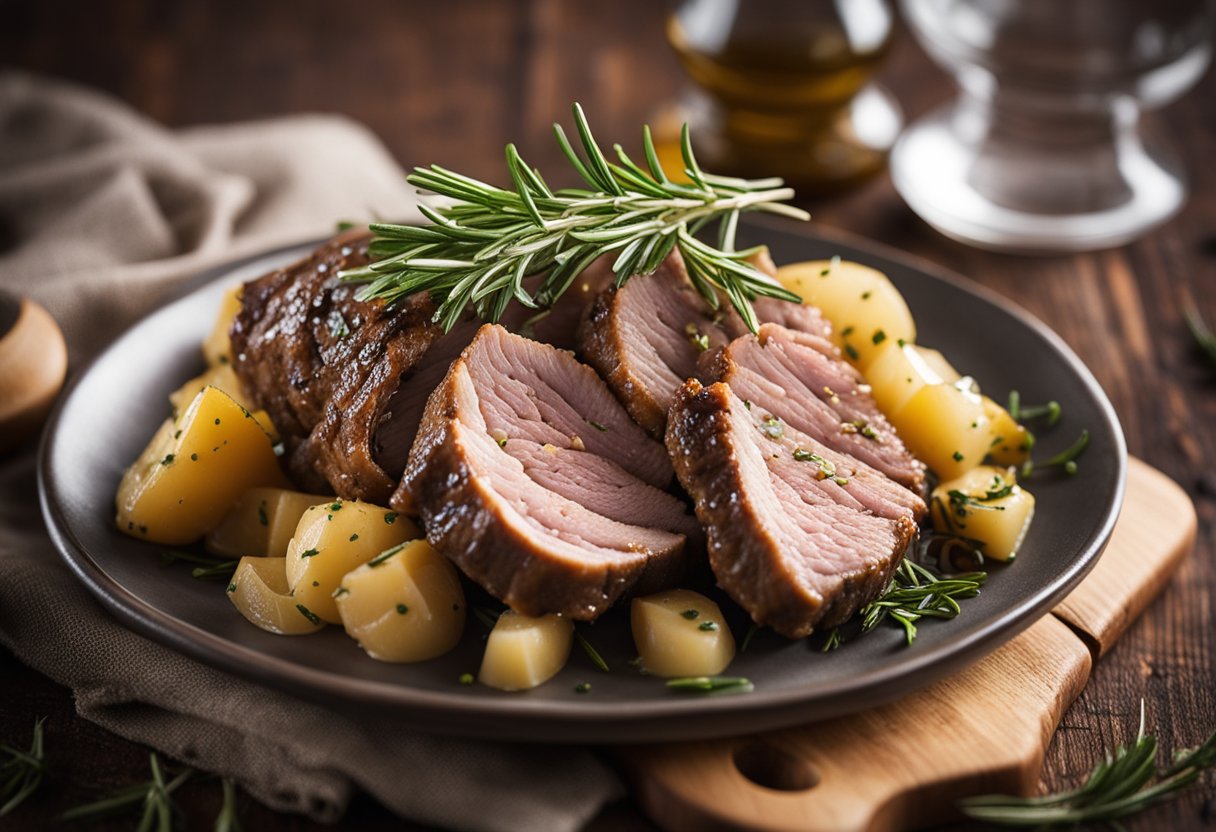
Understanding lamb is the first step in figuring out what it tastes like. Lamb is a young sheep, typically under a year old, and it’s a popular meat in many cultures around the world.
It’s a lean meat that’s high in protein, vitamins, and minerals, and it can be cooked in a variety of ways. But what does it actually taste like?
Key Takeaways
- Lamb has a unique, slightly gamey flavor that is distinct from other meats.
- The taste of lamb can vary depending on factors like the animal’s diet and the cut of meat.
- Herbs and spices like rosemary, garlic, and mint can complement the flavor of lamb.
Understanding Lamb
As a chef, I have cooked and tasted lamb in various forms, from chops to roasts to stews. Lamb is a type of red meat that comes from young sheep, typically less than a year old.
It is a rich source of protein, iron, zinc, selenium, and vitamin B12, making it a nutritious addition to any diet.
When it comes to taste, lamb has a unique flavor that sets it apart from other meats. It is often described as meaty, earthy, and slightly gamey.
The taste can vary depending on the cut of meat and the cooking method used. For example, lamb chops cooked on the grill may have a smoky flavor, while a slow-cooked lamb stew may have a more savory taste.
In terms of nutrition, lamb is a great source of protein, which is essential for building and repairing muscle tissue. It is also rich in iron, which helps transport oxygen throughout the body, and zinc, which supports a healthy immune system.
Additionally, lamb contains selenium, which is important for thyroid function, and vitamin B12, which is necessary for a healthy nervous system.
While lamb is a nutritious meat, it is important to choose lean cuts and cook it in a healthy manner to maximize its health benefits.
For example, trimming excess fat from the meat before cooking can reduce saturated fat intake. Grilling, roasting, or broiling lamb can also help reduce excess fat and calories compared to frying or sautéing.
In summary, lamb is a flavorful and nutritious type of red meat that can be enjoyed in a variety of dishes. It is a great source of protein, iron, zinc, selenium, and vitamin B12, making it a healthy addition to any diet.
By choosing lean cuts and cooking it in a healthy manner, you can maximize its nutritional benefits while still enjoying its unique taste.
Lamb’s Unique Flavor Profile
As a chef, I have had the opportunity to work with a wide range of meats, and lamb is one of my favorites. Lamb has a unique flavor profile that sets it apart from other meats, and it’s important to understand what makes it special.
When it comes to taste, lamb has a mild flavor that can be described as slightly sweet and earthy. However, what really makes lamb stand out is its gamy flavor.
Some people describe this as a “gamey” taste, which can be off-putting to those who are not used to it. However, for those who enjoy it, this gamy flavor is what makes lamb so delicious.
The gamy flavor of lamb comes from the animal’s diet and lifestyle. Lambs are typically raised on grass, which gives their meat a distinct flavor.
Additionally, lambs are very active animals, which leads to the development of more muscle in their meat. This muscle has a unique flavor that is different from other meats.
When cooking with lamb, it’s important to keep its unique flavor profile in mind. Lamb pairs well with herbs and spices that can help balance out its gamy flavor.
Rosemary, thyme, and garlic are all great choices when cooking with lamb. Additionally, cooking methods like grilling or roasting can help bring out the best in lamb’s flavor.
Overall, lamb’s unique flavor profile is what makes it such a special meat. While some may find its gamy flavor off-putting, for those who enjoy it, there’s nothing quite like the taste of a perfectly cooked lamb dish.
Comparing Lamb to Other Meats
As a meat lover, I have tried various types of meat, including beef, pork, chicken, goat, and lamb. Each meat has its unique flavor and texture, making it a favorite of many. However, when it comes to lamb, it stands out from the rest.
Compared to beef, lamb has a sharper, earthier, and slightly gamey taste, which is attributed to the presence of branched-chain fatty acids.
Beef lacks these fatty acids, which makes its taste different from lamb. Additionally, lamb has a more tender texture than beef, making it easier to cook and chew.
Pork, on the other hand, has a milder flavor than lamb. It is also less gamey and has a sweeter taste. Pork is also more tender than lamb, but not as much as beef. When cooked, pork has a crispy texture on the outside and a juicy and tender texture on the inside.
Chicken is the most popular meat worldwide, and it has a mild taste compared to lamb. It is also less gamey and has a more subtle flavor.
Chicken is also leaner than lamb, making it a healthier option. When cooked, chicken has a crispy texture on the outside and a soft texture on the inside.
Goat meat is similar to lamb in taste and texture, but it has a slightly stronger flavor. It is also leaner than lamb, making it a healthier option. When cooked, goat meat has a tender texture and a slightly gamey taste.
In conclusion, lamb has a unique taste and texture that sets it apart from other meats. Its sharp, earthy, and slightly gamey taste makes it a favorite of many meat lovers.
Its tender texture also makes it easier to cook and chew. However, the taste and texture of lamb may not be for everyone, and it is essential to try it before deciding if it is a favorite.
The Impact of Diet on Lamb’s Taste

As a food lover, I have always been curious about the taste of lamb. After trying it, I have come to realize that the taste of lamb is unique and quite different from other meats. One of the factors that contribute to the distinct taste of lamb is its diet.
Lamb’s diet can significantly affect its flavor. Grass-fed lamb has a more robust taste than grain-fed lamb. This is because grass-fed lamb has a higher concentration of omega-3 fatty acids due to their diet of grass and other vegetation.
In contrast, grain-fed lamb has a higher concentration of omega-6 fatty acids, which can lead to a less desirable taste.
Moreover, the type of grass and vegetation that lamb feeds on can also impact its flavor. For example, lambs that graze on clover and alfalfa may have a sweeter taste than those that eat wild grasses.
The breed of lamb can also affect its flavor. Some breeds are naturally more flavorful than others.
It is worth noting that the diet of lamb can also impact its nutritional value. Grass-fed lamb is a better source of vitamins and minerals, including vitamin E, beta-carotene, and selenium, than grain-fed lamb.
Additionally, grass-fed lamb has lower levels of unhealthy fats, making it a healthier option.
In conclusion, the diet of lamb plays a significant role in its flavor and nutritional value. Grass-fed lamb has a more robust taste and is a healthier option than grain-fed lamb.
The type of grass and vegetation that lamb feeds on, as well as the breed of lamb, can also impact its flavor.
Different Cuts of Lamb
As with any meat, the taste of lamb can vary depending on the cut. Different cuts of lamb can have different levels of tenderness, flavor, and fat content. Here are some of the most common cuts of lamb:
Shoulder
Lamb shoulder is a flavorful cut that is best suited for slow cooking methods such as roasting or braising. It can be bone-in or boneless and is often sold as a roast or in smaller portions as stew meat.
Lamb shoulder can be a bit tough, but when cooked properly, it can be incredibly tender and juicy.
Leg
The leg of lamb is a popular cut that is often roasted or grilled. It can be bone-in or boneless and is typically sold as a whole leg or in smaller portions as steaks or chops.
The leg of lamb is a lean cut that can be quite tender when cooked properly.
Loin Chops
Lamb loin chops are a tender and flavorful cut that is often grilled or pan-seared. They are bone-in and typically sold in pairs.
Lamb loin chops can be quite expensive, but they are worth the price for their tenderness and flavor.
Rack of Lamb
Rack of lamb is a premium cut that is often served at special occasions. It is a tender and flavorful cut that is typically roasted or grilled.
The rack of lamb is bone-in and can be quite expensive, but it is a delicious and impressive cut of meat.
Lamb Chops
Lamb chops are a popular cut that can be grilled, broiled, or pan-seared. They can be bone-in or boneless and are typically sold in pairs. Lamb chops are a tender and flavorful cut that is often served with herbs and spices.
Lamb Neck
Lamb neck is a tough and flavorful cut that is best suited for slow cooking methods such as braising or stewing. It is often sold bone-in and can be quite inexpensive.
Lamb neck can be used to add flavor to soups, stews, and other dishes.
Shank
Lamb shank is a flavorful and tender cut that is best suited for slow cooking methods such as braising or stewing. It is often sold bone-in and can be quite inexpensive.
Lamb shank can be used to add flavor to soups, stews, and other dishes.
Rib Chops
Lamb rib chops are a flavorful and tender cut that is often grilled or pan-seared. They are bone-in and typically sold in pairs.
Lamb rib chops can be quite expensive, but they are worth the price for their tenderness and flavor.
Overall, each cut of lamb has its own unique flavor and texture. It is important to choose the right cut for the dish you are preparing and to cook it properly to ensure the best possible taste and tenderness.
Methods of Cooking Lamb
When it comes to cooking lamb, there are various methods that can be used depending on the cut of meat and personal preference. Here are some popular methods of cooking lamb:
Grilling
Grilling is a popular method of cooking lamb. It is best used for cuts like lamb chops, lamb steaks, and ground lamb. To grill lamb, preheat the grill to high heat and season the meat with salt, pepper, and any other desired seasonings.
Grill the lamb for 3-4 minutes per side for medium-rare or 5-6 minutes per side for medium.
Roasting
Roasting is a great method for larger cuts of lamb like leg of lamb or rack of lamb. To roast lamb, preheat the oven to 350°F and season the meat with salt, pepper, and any other desired seasonings.
Place the lamb in a roasting pan and cook for approximately 20 minutes per pound for medium-rare or 25 minutes per pound for medium.
Stews
Stews are a great way to cook tougher cuts of lamb like lamb shanks or lamb shoulder. To make a lamb stew, brown the lamb in a Dutch oven or heavy pot and then add vegetables, broth, and seasonings.
Simmer the stew for 2-3 hours until the meat is tender and falling off the bone.
Roasts
Roasting is also a popular method for cooking lamb roasts like boneless leg of lamb or lamb shoulder roast. To roast a lamb roast, preheat the oven to 350°F and season the meat with salt, pepper, and any other desired seasonings.
Place the lamb in a roasting pan and cook for approximately 20 minutes per pound for medium-rare or 25 minutes per pound for medium.
In conclusion, there are various methods of cooking lamb that can be used depending on the cut of meat and personal preference.
Grilling and roasting are great methods for lamb chops, lamb steaks, and larger cuts of lamb like leg of lamb or rack of lamb. Stews are a great way to cook tougher cuts of lamb like lamb shanks or lamb shoulder.
Herbs and Spices That Complement Lamb
As a chef, I have experimented with various herbs and spices that can complement the unique taste of lamb. Here are some of my favorite herbs and spices that can take your lamb dish to the next level:
Rosemary
Rosemary is a classic herb that pairs perfectly with lamb. Its robust, woodsy flavor complements the bold, gamey taste of lamb. You can use fresh or dried rosemary to season your lamb.
If you’re using fresh rosemary, chop it finely and sprinkle it over the lamb. If you’re using dried rosemary, crush it between your fingers to release its flavor and sprinkle it over the lamb.
Thyme
Thyme is another herb that works well with lamb. Its earthy, slightly sweet flavor can enhance the natural taste of lamb. You can use fresh or dried thyme to season your lamb.
If you’re using fresh thyme, strip the leaves from the stem and chop them finely. If you’re using dried thyme, crush it between your fingers to release its flavor and sprinkle it over the lamb.
Mint
Mint is a refreshing herb that can balance the rich flavor of lamb. Its cool, slightly sweet taste can also help to cut through the fat in lamb. You can use fresh or dried mint to season your lamb.
If you’re using fresh mint, chop it finely and sprinkle it over the lamb. If you’re using dried mint, crush it between your fingers to release its flavor and sprinkle it over the lamb.
Basil
Basil is a versatile herb that can add a touch of sweetness to lamb. Its slightly spicy and sweet flavor can complement the natural flavor of lamb. You can use fresh or dried basil to season your lamb.
If you’re using fresh basil, chop it finely and sprinkle it over the lamb. If you’re using dried basil, crush it between your fingers to release its flavor and sprinkle it over the lamb.
Garlic Powder
Garlic powder is a convenient way to add a pungent, savory flavor to lamb. It can also help to tenderize the meat. You can sprinkle garlic powder over the lamb before cooking or mix it with other herbs and spices to create a seasoning blend.
In conclusion, there are many herbs and spices that can complement the unique taste of lamb. Rosemary, thyme, mint, basil, and garlic powder are just a few examples of the many options available.
Experiment with different herbs and spices to find the perfect combination for your lamb dish.
Lamb Across the Globe
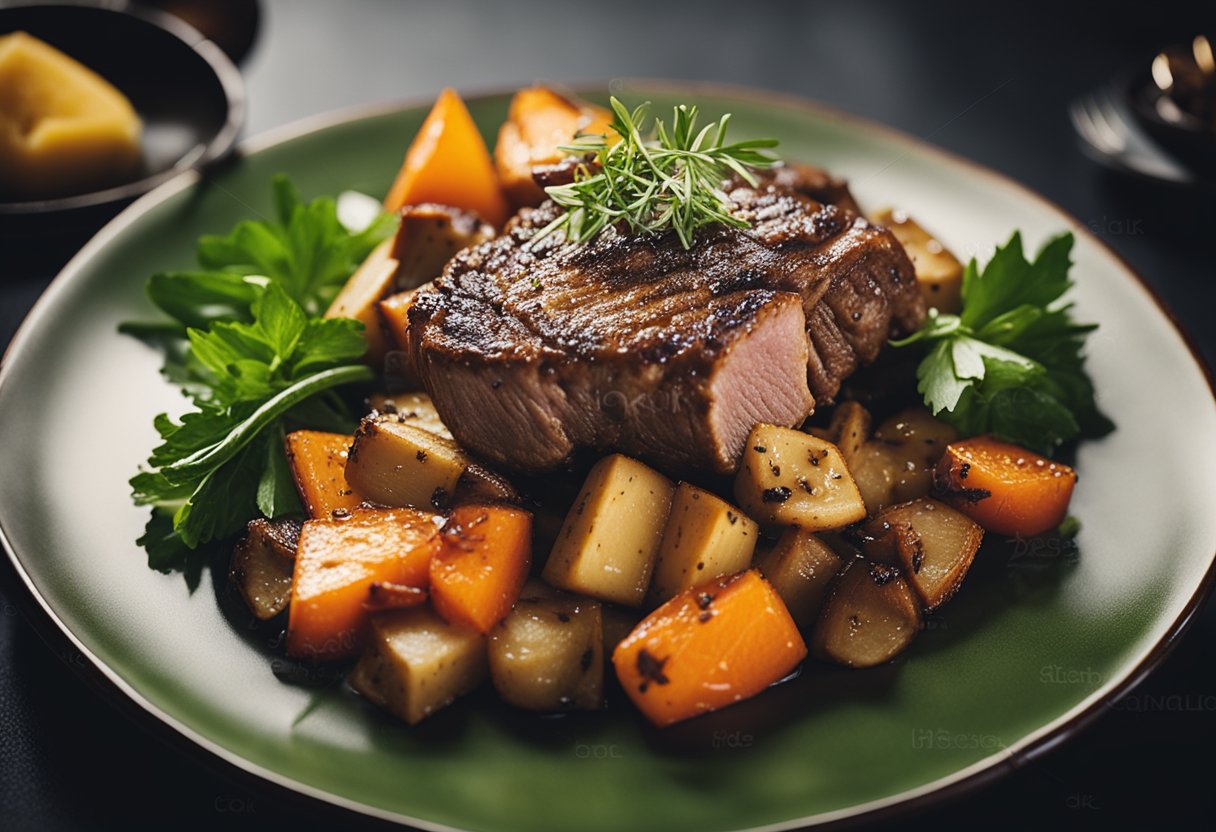
As a food enthusiast, I have had the opportunity to taste lamb from different parts of the world. The flavor profile of lamb can vary depending on the breed, diet, and preparation method. Here are some of my experiences with lamb from different regions.
New Zealand Lamb
New Zealand is known for producing high-quality lamb that is grass-fed and free-range. The meat is tender, mild, and has a delicate flavor. The lamb is usually slaughtered at a young age, which contributes to its tenderness.
New Zealand lamb is popular in many countries, including the United States, where it is often used in Mediterranean and Middle Eastern cuisine.
American Lamb
American lamb has a stronger flavor than New Zealand lamb. This is because American lambs are usually grain-fed and have more fat content.
The meat is also more robust and has a slightly gamey taste. American lamb is often used in traditional American cuisine, such as lamb chops and stews.
Australian Lamb
Australian lamb is similar to New Zealand lamb in terms of flavor and tenderness. However, Australian lamb is usually larger and has a more pronounced flavor.
This is because Australian lambs are often raised on a mixed diet of grass and grain. The meat is often used in Asian and Mediterranean cuisine.
Hogget
Hogget is a term used to describe lamb that is between one and two years old. The meat is more mature than lamb, which gives it a stronger flavor.
Hogget is popular in the UK and Europe, where it is often used in stews and roasts. The meat is also more flavorful than lamb and has a slightly gamey taste.
In conclusion, lamb can have a variety of flavors depending on the region and preparation method. New Zealand lamb is mild and delicate, American lamb is robust and gamey, Australian lamb is pronounced and flavorful, and hogget is mature and gamey.
As a food enthusiast, I appreciate the diversity of lamb and the different ways it can be used in cuisine.
Lamb in Recipes
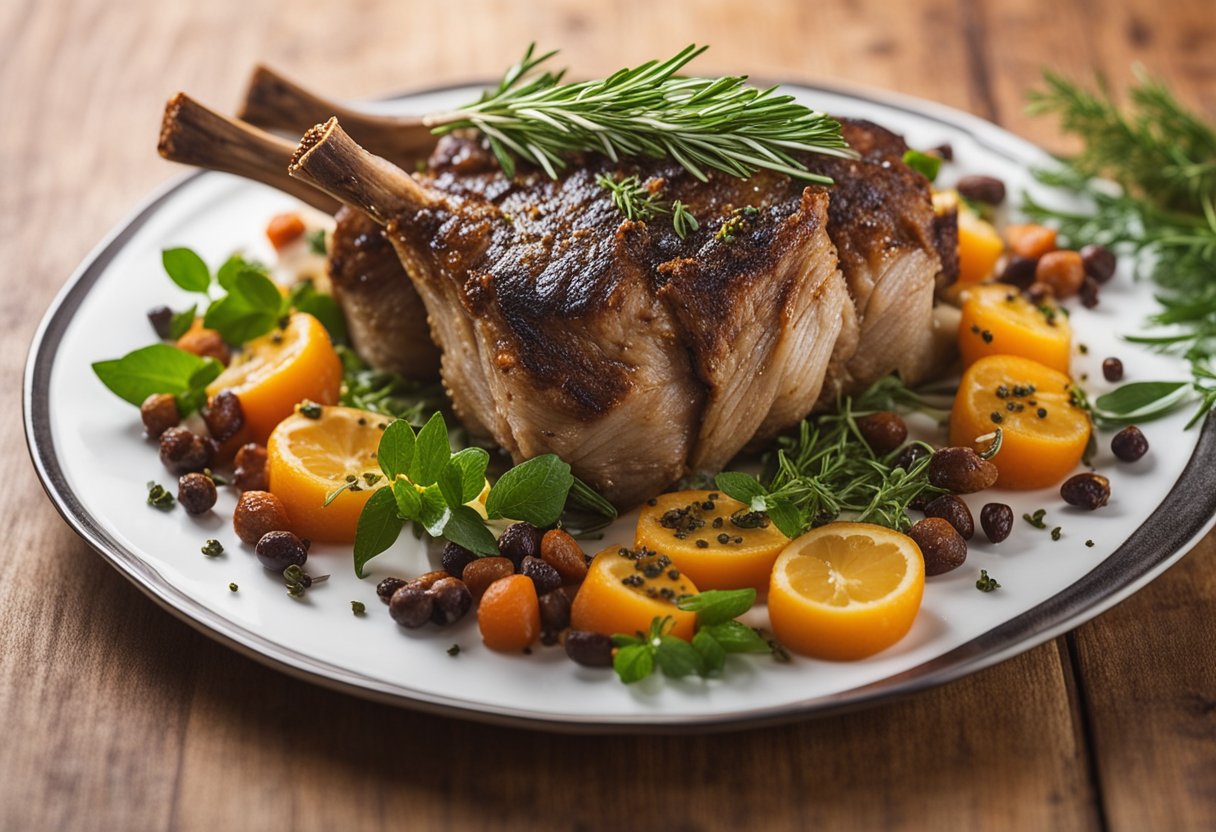
Lamb is a versatile meat that can be used in a variety of recipes. Its unique flavor and texture make it a great choice for many dishes. Here are some ways you can use lamb in your recipes:
Roasted Lamb
Roasting lamb is a classic way to prepare it. A roasted leg of lamb is a popular dish for special occasions and holidays. It is typically seasoned with herbs like rosemary and thyme and served with sides like roasted potatoes and vegetables.
Roasting lamb can also be done with other cuts like lamb chops or a rack of lamb.
Lamb Curry
Lamb curry is a flavorful and spicy dish that is popular in Indian and Middle Eastern cuisine. It typically includes lamb, onions, garlic, ginger, and a blend of spices like cumin, coriander, and turmeric. Lamb curry can be served with rice or naan bread.
Lamb Stew
Lamb stew is a hearty and comforting dish that is perfect for colder weather. It typically includes lamb, vegetables like carrots and potatoes, and a broth or tomato-based sauce. Lamb stew can be seasoned with herbs like thyme and bay leaves for added flavor.
Lamb Burgers
Lamb burgers are a tasty alternative to traditional beef burgers. They are typically seasoned with herbs like mint and parsley and served with toppings like feta cheese and tzatziki sauce. Lamb burgers can be grilled or cooked in a skillet.
Using lamb in your recipes can add a unique flavor and texture to your dishes. Whether you are roasting a leg of lamb for a special occasion or making lamb burgers for a casual meal, there are many ways to incorporate lamb into your cooking.
Nutritional Profile of Lamb
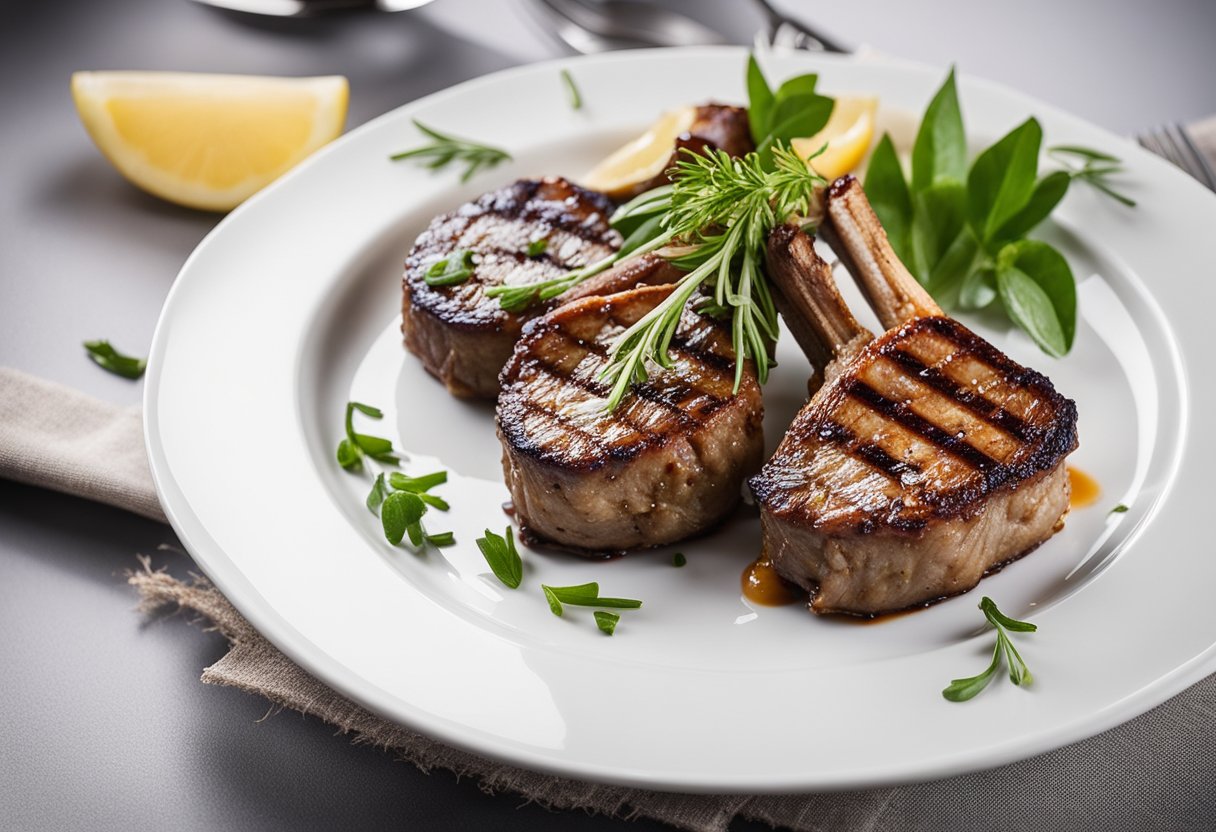
Lamb is a nutrient-dense meat that provides several essential nutrients to the body. Here is a brief overview of the nutritional profile of lamb:
Protein
Lamb is an excellent source of protein, which is essential for building and repairing tissues in the body. A 3-ounce serving of lamb provides around 21 grams of protein, which is approximately 42% of the daily recommended intake for an average adult.
Iron
Lamb is also a good source of iron, which is necessary for the formation of red blood cells in the body. A 3-ounce serving of lamb provides around 2.6 milligrams of iron, which is approximately 14% of the daily recommended intake for an average adult.
Zinc
Lamb is a rich source of zinc, which is essential for immune function, wound healing, and DNA synthesis. A 3-ounce serving of lamb provides around 3.8 milligrams of zinc, which is approximately 35% of the daily recommended intake for an average adult.
Selenium
Lamb is also a good source of selenium, which is important for thyroid function and antioxidant defense. A 3-ounce serving of lamb provides around 19 micrograms of selenium, which is approximately 34% of the daily recommended intake for an average adult.
Vitamin B12
Lamb is one of the best dietary sources of vitamin B12, which is necessary for the formation of red blood cells and the proper functioning of the nervous system.
A 3-ounce serving of lamb provides around 2.7 micrograms of vitamin B12, which is approximately 113% of the daily recommended intake for an average adult.
Saturated Fat
Lamb is a relatively high-fat meat, with around 40% of the fat being saturated. While saturated fat has been linked to an increased risk of heart disease, it is important to note that not all saturated fats are created equal.
Lamb contains significant amounts of branched-chain fatty acids (BCFAs) and caprylic acid, which have been shown to have potential health benefits.
Fatty Acids
Lamb is also a good source of both saturated and unsaturated fatty acids. A 3-ounce serving of lamb provides around 3.8 grams of saturated fat and 1.3 grams of monounsaturated fat, which is approximately 15% and 8% of the daily recommended intake for an average adult, respectively.
Additionally, lamb provides around 0.3 grams of polyunsaturated fat, which is important for brain function and reducing inflammation in the body.
Overall, lamb is a nutrient-dense meat that provides several essential nutrients to the body. While it is relatively high in saturated fat, it also contains several beneficial fatty acids and other nutrients that make it a healthy addition to a balanced diet.
Eating Lamb at Restaurants
When dining out, lamb is a popular menu item in many restaurants. It is a versatile meat that can be prepared in various ways, including grilling, roasting, and braising. The cooking style can heavily influence the taste and texture of the lamb.
When ordering lamb at a restaurant, it is important to consider how it is served. A popular presentation is a roasted rack of lamb, which is a rack of lamb that has been seasoned and roasted in the oven. This dish is often served with a side of vegetables and a sauce.
It is also important to note that lamb can have a strong flavor, which may not be to everyone’s liking. However, some restaurants may offer lamb dishes that are milder in taste, such as lamb chops that have been marinated in a sweet and savory sauce.
When dining out, it is important to be aware of the cooking style and serving options available for lamb dishes. This can help you choose a dish that suits your taste preferences and ensure that you have an enjoyable dining experience.
Related post: Why Is Lamb Meat So Expensive
Frequently Asked Questions
How would you describe the taste of lamb meat?
Lamb meat has a distinct, earthy flavor that is often described as gamey. It is richer and more flavorful than beef, with a slightly sweet taste. The texture is tender and juicy, with a slight chewiness.
Are lamb chops similar in taste to steak?
While lamb chops and steak are both red meats, they have different taste profiles. Lamb chops have a distinct, gamey flavor, while steak has a more mild, beefy taste. Lamb chops are also leaner than most cuts of steak, which can affect the flavor and texture.
What can you do to remove the gamey taste from lamb?
Some people find the gamey taste of lamb meat to be unpleasant. To reduce the gamey flavor, you can marinate the meat in acidic ingredients like vinegar or lemon juice for several hours before cooking.
You can also use spices like rosemary, thyme, or garlic to mask the gamey taste.
How would you describe the gamey taste?
The gamey taste of lamb meat is often described as earthy, musky, or slightly funky. It is caused by the presence of branched-chain fatty acids in the fat of the lamb.
While some people enjoy the gamey taste, others find it too strong or overpowering.
Why might lamb taste like liver?
If lamb meat tastes like liver, it may be due to the presence of excessive amounts of copper in the animal’s diet. Copper can accumulate in the liver and other organs, affecting the taste and texture of the meat.
If you notice a liver-like taste in your lamb meat, it is best to avoid eating it.
Does lamb have a unique flavor profile or pair well with certain foods?
Lamb has a unique flavor profile that pairs well with a variety of ingredients. It is often served with bold flavors like garlic, rosemary, and mint.
Lamb also pairs well with sweet and savory ingredients like honey, apricots, and figs. It is a popular meat for Mediterranean and Middle Eastern dishes, and is often served with rice, couscous, or roasted vegetables.



